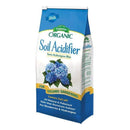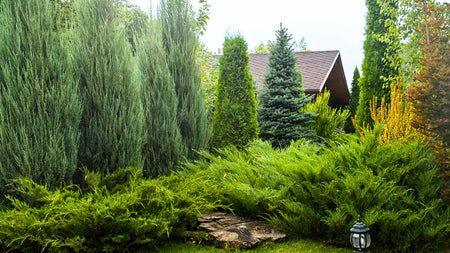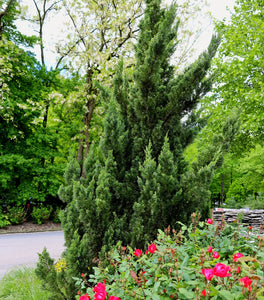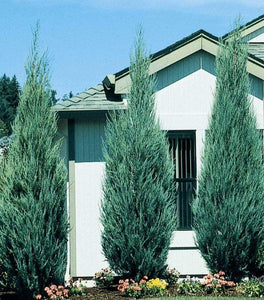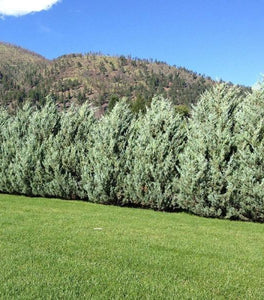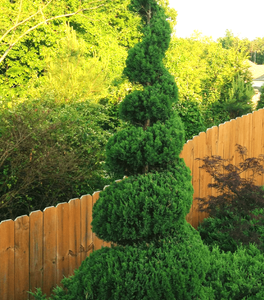
Images Depict Mature Plants
Blue Point Juniper Trees for Sale Online
Blue Point Juniper (Juniperus chinensis 'Blue Point') is a popular, evergreen tree known for its dense, pyramidal shape and stunning blue-green foliage. This versatile juniper grows to a height of 10-12 feet with a spread of 4-6 feet, making it an ideal choice for hedging, privacy screens, or as a formal focal point in the landscape. Its tightly packed, needle-like foliage maintains its vibrant color year-round, offering a beautiful, low-maintenance solution for adding structure and visual interest to gardens and outdoor spaces.
In addition to its attractive appearance, the Blue Point Juniper is highly adaptable to a variety of soil conditions and thrives in full sun. Once established, this tree is drought-tolerant and requires minimal pruning to maintain its natural pyramidal form. Its hardy nature makes it an excellent choice for homeowners seeking a reliable, low-maintenance plant that can withstand harsh environmental conditions such as heat, cold, and wind. Whether used in mass plantings or as a standalone specimen, Blue Point Juniper adds a sense of elegance and durability to any landscape.
Beyond its beauty, Blue Point Juniper is also deer-resistant, making it a durable option for regions where wildlife can be an issue. This tree's strong, upright growth habit makes it perfect for creating privacy screens or windbreaks, while its evergreen foliage provides year-round color and texture. With its combination of resilience, striking color, and low-maintenance care, Blue Point Juniper is a versatile and dependable choice for a variety of landscape designs.
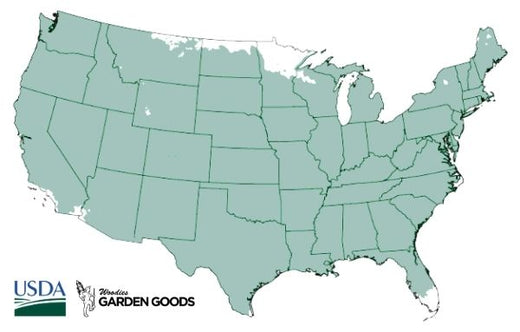
| Hardiness Zone: | 4-9 |
|---|---|
| Mature Height: | 10 to 12 Feet |
| Mature width: | 4 to 6 Feet |
| Classification: | Evergreen tree |
| Sunlight: | Full sun to part sun |
| Habit: | Upright pyramidal, conical |
| Foliage: | Blue green |
| Flower Color: | Inconspicuous |
| Pruning Season: | Prune in late winter before new growth or after new growth hardens off in summer |
| Soil Condition: | Any well drained, slightly acidic soil |
| Water Require: | Water frequently until established, then only as needed in extreme heat |
How to Care for Blue Point Juniper
Before you buy a Blue Point Juniper Trees, make sure to read about the care instructions that are required and recommended to keep this plant healthy and flourishing.
How do I plant Blue Point Juniper Trees?
To plant Blue Point Juniper Trees, choose a location that receives full sun, as this juniper thrives with at least 6-8 hours of direct sunlight per day. Ensure the soil is well-draining, as junipers do not tolerate standing water or overly moist conditions. Begin by digging a hole twice as wide and just as deep as the tree’s root ball, allowing room for the roots to spread. Place the tree in the hole, making sure the top of the root ball is level with the surrounding soil. Backfill the hole with a mixture of native soil and organic matter, then water thoroughly to settle the soil and eliminate air pockets. Once planted, apply a 2-3 inch layer of organic mulch around the base of the Blue Point Juniper to retain moisture, regulate soil temperature, and prevent weed growth. Be sure to keep the mulch a few inches away from the trunk to prevent rot. Water the tree regularly during its first growing season to help establish a strong root system, especially in hot or dry conditions. After the first year, Blue Point Juniper becomes highly drought-tolerant and requires minimal watering, making it a low-maintenance addition to your landscape.
How do I fertilize Blue Point Juniper Trees?
To fertilize Blue Point Juniper Trees, it’s best to apply a balanced, slow-release fertilizer in early spring, just as new growth begins to emerge. Use a fertilizer with a formulation like 10-10-10 or 12-4-8 to provide essential nutrients such as nitrogen, phosphorus, and potassium that support healthy foliage and root development. Spread the fertilizer evenly around the base of the tree, extending slightly beyond the drip line, and water thoroughly to help the nutrients absorb into the soil. This annual feeding will promote robust growth and vibrant blue-green foliage throughout the growing season. Avoid over-fertilizing Blue Point Juniper Trees, as too much fertilizer can lead to excessive, leggy growth and weaken the plant’s natural hardiness. In most cases, a single spring application is sufficient, but if your juniper is planted in nutrient-poor soil, a second light application in mid-summer may be beneficial. Organic compost or well-rotted manure can also be used to enrich the soil and provide a slow, steady release of nutrients. Proper fertilization ensures your Blue Point Juniper maintains its dense, pyramidal form and stays healthy year-round with minimal maintenance.
How often should I water my Blue Point Juniper Trees?
When first planted, Blue Point Juniper Trees should be watered regularly to help establish a strong root system. During the first growing season, water deeply once or twice a week, ensuring the soil remains consistently moist but not waterlogged. This is particularly important in hot or dry conditions. Applying a 2-3 inch layer of mulch around the base of the tree helps retain moisture and prevent water evaporation. After planting, check the soil moisture regularly to make sure the roots are getting enough water, but avoid overwatering, which can lead to root rot. Once established, Blue Point Juniper Trees become highly drought-tolerant and require far less frequent watering. Typically, watering once every 10-14 days during dry spells or extreme heat should be sufficient. In cooler months or during rainy seasons, supplemental watering may not be necessary. Always allow the soil to dry out between waterings to prevent waterlogged conditions. By following these watering guidelines, your Blue Point Juniper will thrive, maintaining its dense, pyramidal form and vibrant blue-green foliage with minimal care.

How to Prune Blue Point Juniper Trees?
Pruning Blue Point Juniper trees is essential for maintaining their natural pyramidal shape, encouraging dense foliage, and keeping the plant healthy. The best time to prune Blue Point Juniper is in early spring before new growth begins, or in late winter when the tree is still dormant. Start by removing any dead, damaged, or diseased branches, as this will help improve the overall health of the tree and reduce the risk of pests and disease. Use clean, sharp pruning shears to make precise cuts, and focus on thinning out areas of overcrowded growth to enhance airflow and light penetration. Be cautious not to cut too deeply into old wood, as junipers do not regenerate well from older, bare branches, which can lead to gaps that take a long time to fill in. Light pruning throughout the growing season can also be beneficial for shaping and controlling the size of your Blue Point Juniper. If you want to maintain a compact, dense look, trim back any stray branches that disrupt the tree's natural conical form. Always make small, gradual cuts rather than large, drastic pruning, as over-pruning can stress the tree and result in an uneven appearance. Avoid cutting into the central leader or main branches, as this could alter the tree’s structural integrity and overall shape. With proper pruning techniques, your Blue Point Juniper will maintain its signature blue-green foliage and attractive conical form, adding year-round beauty and vertical interest to your landscape.











